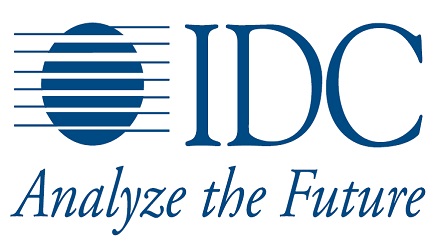E-Business
HP, IBM Lead Global Server Vendor Market

According to the International Data Corporation (IDC) Worldwide Quarterly Server Tracker, factory revenue in the worldwide server market increased 2.5% year over year to $12.6 billion in the second quarter of 2014 (2Q14).
Server unit shipments improved 1.2% year over year in 2Q14 to 2.2 million units as investments in hyperscale datacenter capacity were largely offset by consolidation, which continued to be a strategic focus for many large and small customers around the globe.
Additionally, IDC continues to see signs of a server refresh cycle that is expected to lift the market going forward.
On a year-over-year basis, volume systems experienced 4.9% revenue growth. This was the fifth consecutive quarter that volume system demand increased year over year.
Midrange systems also experienced growth of 11.6% year over year as technology refresh cycles began to positively impact the segment.
Meanwhile, high-end enterprise systems experienced a year-over-year revenue decline of -9.8% primarily due to difficult annual comparisons in the segment.
“The server market is experiencing the beginning of a cyclical refresh cycle as systems deployed shortly after the financial crisis are retired and replaced. IDC expects this refresh cycle will continue well into 2015 and be further accelerated by Microsoft’s announcement that it is ending support for Windows Server 2003 coupled with Intel’s forthcoming release of the Grantley Xeon EP and a significant number of related server platform announcements,” said Matt Eastwood, group vice president and general manager, Enterprise Platforms at IDC.
“At the same time, IDC is also seeing early stage enterprise investment in 3rd Platform workloads that leverage Webscale architectures typically seen in hyperscale environments. These workloads will drive additional interest in software-defined environments that will further enhance the need for servers deployed as the infrastructure underpinning these next generation datacenters.”
Overall Server Market Standings, by Vendor shows that HP held the number one spot in the worldwide server market with 25.4% factory revenue share for 2Q14.
HP’s 4.0% revenue growth included improving demand for x86-based ProLiant servers and continued weakness in Itanium-based Integrity server revenue.
IBM held the number 2 spot with 23.6% share for the quarter as factory revenue decreased -10.2% compared to 2Q13.
Demand for IBM’s Power -based systems declined sharply year over year in advance of a significant technology refresh.
Dell maintained the third position with 16.6% factory revenue market share in 2Q14 as factory revenue declined -6.5% compared to 2Q13 as Dell works to re-align its PowerEdge server business with its solutions selling strategy. Oracle and Cisco ended the quarter in a two-way statistical tie* for the number 4 position with 5.9% and 5.8% factory revenue share, respectively.
Cisco’s 2Q14 factory revenue increased 35.4% compared to 2Q13, gaining 1.4 points of market share. Oracle’s factory revenue was up 3.9% year over year in 2Q14.
E-Business
Africa Tasked to Fast-track AI Skills Development

Africa has been urged to fast-track the development of Artificial intelligence (AI) skill to benefit from its economic value. AI could contribute $1.5 trillion to Africa’s economy by 2030 if the continent secures 10% of the global AI market, according to SAP, which sourced the statistic from online media.

However, a shortage of AI talent, with the need to retain cyber security and cloud skills, threatens to block opportunities to monetise growth.
This is part of a report released by SAP: ‘Africa’s AI Skills Readiness Revealed’, which reveals that African organisations are rushing to enhance their traditional IT skills base in the wake of accelerating adoption of AI.
The report adds that while 94% of organisations offer monthly AI training, none currently allocate more than 10% of their HR or IT budgets to skills development, a sharp decline from 2022.
Genevieve Koolen, HR director at SAP Africa, said: “There is a near-universal need for AI-related skills among African companies this year. Since traditional IT skills such as cloud and cyber security related competencies remain in high demand, companies now face the dual challenge of attracting and retaining traditional tech talent while also building greater AI competencies within their businesses. It is unsurprising then that most African organisations provide career development opportunities for employees with AI specialisations.”
The report reveals that all companies surveyed expect the demand for AI skills to increase in 2025. Nearly half said they expect a ‘significant’ increase.
Koolen added that while there is an urgent need for policymakers and education institutions to fast-track AI skills development initiatives among Africa’s swelling youth population, companies also face pressure to equip existing workers with future-ready skills.
“Thirty-eight percent of companies surveyed said reskilling of employees is a top skills-related challenge for them in 2025, and nearly half said the same of upskilling. The impact of these changes creates its own challenges, as evidenced by the two-thirds of companies that said helping employees understand why reskilling is necessary is a top priority.”
Research also showed that African organisations are alive to the possibilities presented by AI-related innovation, with companies citing perceived value in improved decision-making (64%), marketing capabilities (51%) and innovation (47%) enabled by AI.
However, poor access to AI-ready skills is already causing negative impacts among the same companies, including failed innovation initiatives, delays completing projects, greater pressure on teams and an inability to take on new client projects.
“Organisations are rising to this challenge by increasing the frequency of training offered to employees, with 94% saying they offer training at least monthly,” said Koolen.
However, the latest data indicates a drop in the allocated budget for skills development.
In a previous survey conducted in 2022, a quarter of organisations said they spend more than 15% of their HR or IT budgets on skills development and training. This year, not a single organisation that formed part of the research spent more than 10%.
SAP lists several measures that companies can implement to ensure they cultivate the correct skills mix:
Be prepared: With universal demand for tech and AI-related skills and an ongoing skills scarcity, African organisations must prepare for a shortfall in critical AI-related skills this year.
“The moment calls for a pragmatic approach that combines longer-term skills development – including reskilling and upskilling – with short-term measures that alleviate some of the immediate pressures and creates space for more robust skills development initiatives. Organisations also need to take care to support employees through this uncertain period, for example, by using human capital management technologies that help HR teams identify concerns.”
Prioritise training: Koolen said it is surprising that budget allocations for training and skills development appear to be shrinking. “Too many digital transformation and innovation initiatives fail to deliver the expected business value due to a lack of appropriate skills.
“In light of the rapid pace of technological advancement, any organisation that fails to invest in skills will likely find they are unprepared and unable to leverage new innovations. In time, this will erode their competitiveness and lead to significant impacts to the bottom line.”
Instead, organisations should place skills development at the core of their business strategies to ensure a steady stream of work-ready talent and invest sufficient budget to guarantee high-quality outcomes for employees and the business.
Partner well: While Africa has the fastest-growing youth population of any continent, there are still significant systemic challenges with equipping youth with adequate work-ready skills.
“Africa’s ability to reap the benefits of AI-related innovation rests on broader public-private sector efforts at cultivating the correct skills mix,” said Koolen. “Partnering with educational institutions and other industry skills development initiatives can accelerate the rate at which skills become available to companies.”
She added that technology vendors can also play a valuable role. “Large technology companies often have large global workforces and strong employer brands, allowing them to attract top talent. Partnering with tech venters can augment organisations’ skills base and provide valuable support to AI-led initiatives.”
E-Business
Google Announces $37m Funding in Africa

Google has outlined a wave of AI support across Africa, representing $37 million in cumulative funding — including previously committed but unannounced funding — to research, talent development, and infrastructure.

The funding package includes funding and partnerships that aim to strengthen AI research, support African languages, improve food systems, expand digital skills, and build research capacity.
The AI Collaborative for Food Security, a multi-partner initiative launched with $25 million in funding from Google.org will bring together researchers, and nonprofit organizations to co-develop AI tools for early hunger forecasting, crop resilience, and tailored guidance for smallholder farmers.
The goal is to help make food systems across Africa more adaptive, equitable, and resilient in the face of increasing climate and economic shocks.
Google also announced $3 million in funding to the Masakhane Research Foundation, the open research collective advancing AI tools in over 40 African languages.
The funding will support the development of high-quality datasets, machine translation models, and speech tools that make digital content more accessible to millions of Africans in their native languages.
To further empower innovation, Google is launching a catalytic funding initiative to support AI-driven startups tackling real-world challenges.
This platform will combine philanthropic capital, venture investment, and Google’s technical expertise to help more than 100 early-stage ventures scale AI-based solutions in agriculture, healthcare, education, and other vital sectors.
Startups will also receive mentorship, access to tools, and technical guidance to support responsible development.
Africa’s AI talent is growing rapidly, but the infrastructure to support it must grow in tandem.
That’s why a cornerstone of this announcement is the launch of the AI Community Center in Accra — a first-of-its-kind space for AI learning, experimentation, and collaboration in Africa.
The Center will host training sessions, community events, and workshops focused on responsible AI development. Its programming will span four pillars: AI literacy, community technology, social impact, and arts and culture — providing a platform for a diverse ecosystem of developers, students, and creators to engage with AI in ways that are grounded in African priorities.
To help meet the rising demand for AI and digital skills, Google is rolling out 100,000 Google Career Certificate scholarships for students in higher learning institutions across Ghana.
These fully funded, self-paced programs will focus on AI Essentials, Prompting Essentials, and other high-growth fields like IT Support, Data Analytics, and Cybersecurity — enabling more learners to access job-ready training and build careers in AI and the digital economy.
Beyond Ghana, Google.org is committing an additional $7 million to support AI education across Nigeria, Kenya, South Africa, and Ghana.
The funding will support academic institutions and nonprofits building localized AI curricula, online safety training, and cybersecurity programs.
Additionally, two new $1 million grants from Google.org aim to bolster AI research capacity across the continent.
One grant goes to the African Institute for Data Science and Artificial Intelligence (AfriDSAI) at the University of Pretoria to support applied AI research and training.
The other supports the Wits Machine Intelligence and Neural Discovery (MIND) Institute in South Africa, which will fund MSc and PhD students to conduct foundational AI research and help shape Africa’s role in the global AI landscape.
Speaking about the announcements, James Manyika, senior vice president for Research, Labs, and Technology & Society at Google, said: “Africa is home to some of the most important and inspiring work in AI today. We are committed to supporting the next wave of innovation through long-term investment, local partnerships, and platforms that help researchers and entrepreneurs build solutions that matter.”
Yossi Matias, vice president of Engineering and Research at Google, added: “This new wave of support reflects our belief in the talent, creativity, and ingenuity across the continent. By building with local communities and institutions, we’re supporting solutions that are rooted in Africa’s realities and built for global impact.”
E-Business
How High the Risk of a Cyber Incident in Your Organisation

One of the core reasons why businesses remain vulnerable to cyberthreats is that they underestimate their risk or overestimate the strength of their existing defences.

According to a recent Kaspersky survey entitled “Cybersecurity in the workplace: Employee knowledge and behaviour”, 52,1% of professionals surveyed in the Middle East, Turkiye and Africa (META) region, whose work requires the use of computers, asses the risk of a cybersecurity incident happening to their company as quite possible.
Commenting on the probable consequences of a cybersecurity incident, 55,6% of employees surveyed supposed that it might seriously affect the company. This understanding of risks comes not only from general cybersecurity awareness, but also from knowledge about cyber incidents in their organisations: 31,8% of respondents acknowledged such incidents happened in the past 12-months, while an additional 26,2% said they have heard about these incidents from colleagues.
Organisations nowadays face a variety of cyberthreats ranging from phishing and business email compromise to ransomware and advanced persistent threats.
In a lot of these attacks, the entry point into the organisation’s network is via a human mistake, and it is for that reason attackers actively employ social engineering techniques and AI tools to make their efforts more effective.
The survey shows that the majority of respondents understand that cybersecurity is an issue that should be considered by the IT department, while 23,9% also mentioned top level executives and 15,9% cited legal and financial employees as core groups within the business who should keep cybersecurity issues in mind. Only 30,6% of employees surveyed viewed cybersecurity as an issue that should be considered by all employees across the entire business.
“In today’s digital landscape, cybersecurity is a collective responsibility that extends beyond the IT department. Every employee should remain vigilant against evolving threats.
“Regular cybersecurity training, use of relevant IT solutions, well-defined policies and an incident response plan are essential pillars of organisational cyber resilience. When every team member is informed and prepared, the organisation stands stronger against cyber threats,” says Brandon Muller, Technical Expert for the MEA region at Kaspersky.

 General News2 days ago
General News2 days agoFearless Freedom Launches to Tackle Inequality and Champion Global Economic Inclusion

 Telecom1 day ago
Telecom1 day agoAirtel Nigeria Raises Infrastructure Spending to $39m

 Telecom1 day ago
Telecom1 day agoMTN @ First-ever CED, Pledges to Address Subscribers’ Concerns

 General News1 day ago
General News1 day agoNOA Warns of Fake N1000 Notes in Circulation, How to Identify Them

 General News1 day ago
General News1 day agoNCC, IHS Towers Lead Others To NITRA-ALTON CNII & Telecom Sustainability Conference 2025

 Broadcasting1 day ago
Broadcasting1 day agoGovernment of Ghana Slams MultiChoice, Insists on DStv Price Cut

 E-Financial1 day ago
E-Financial1 day agoWest Africa Emerging as Crypto Adoption Epicentre- SEC Boss

 Broadcasting1 day ago
Broadcasting1 day agoIdris, Information Minister Says Only NBC can Suspend Broadcast Licences



























